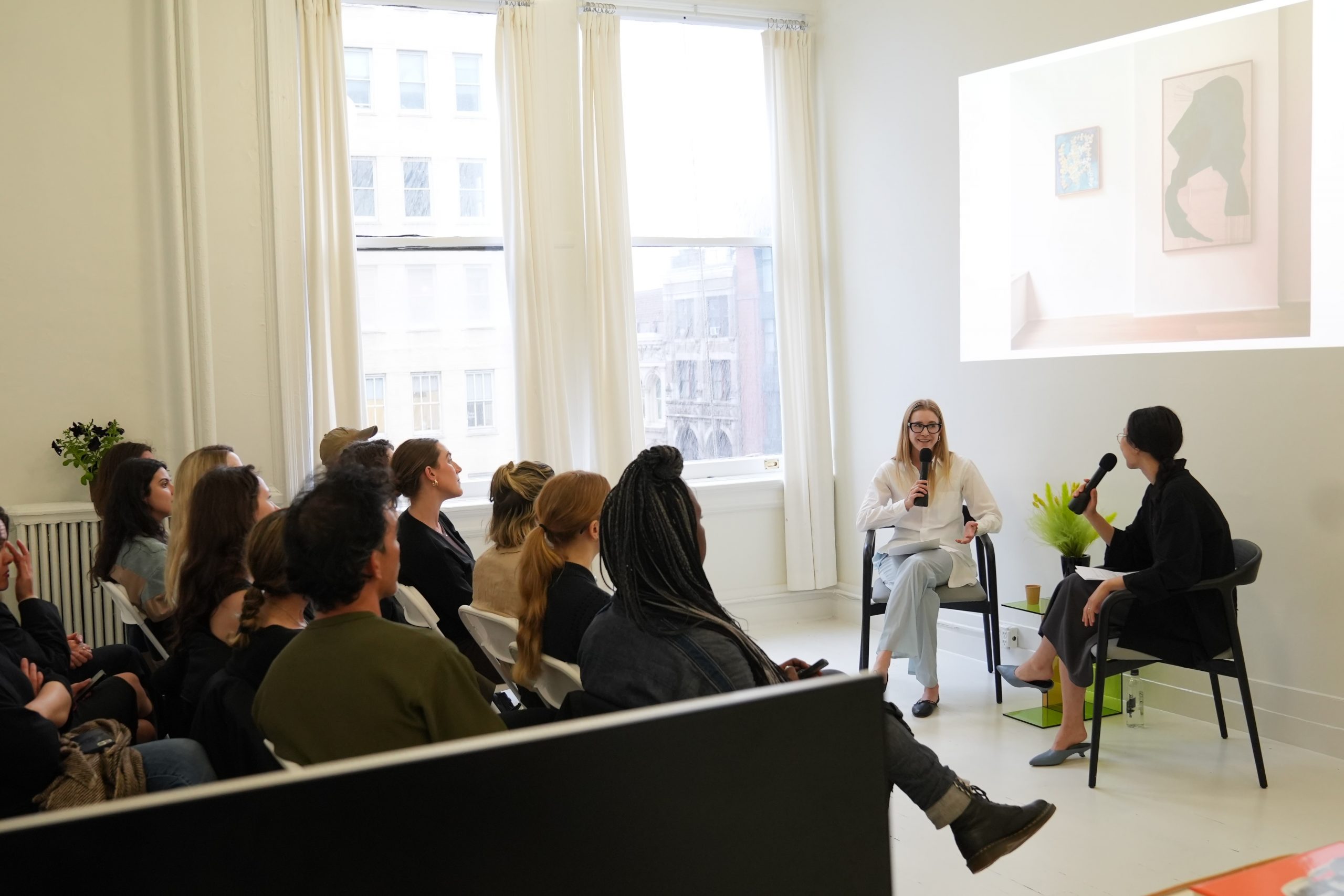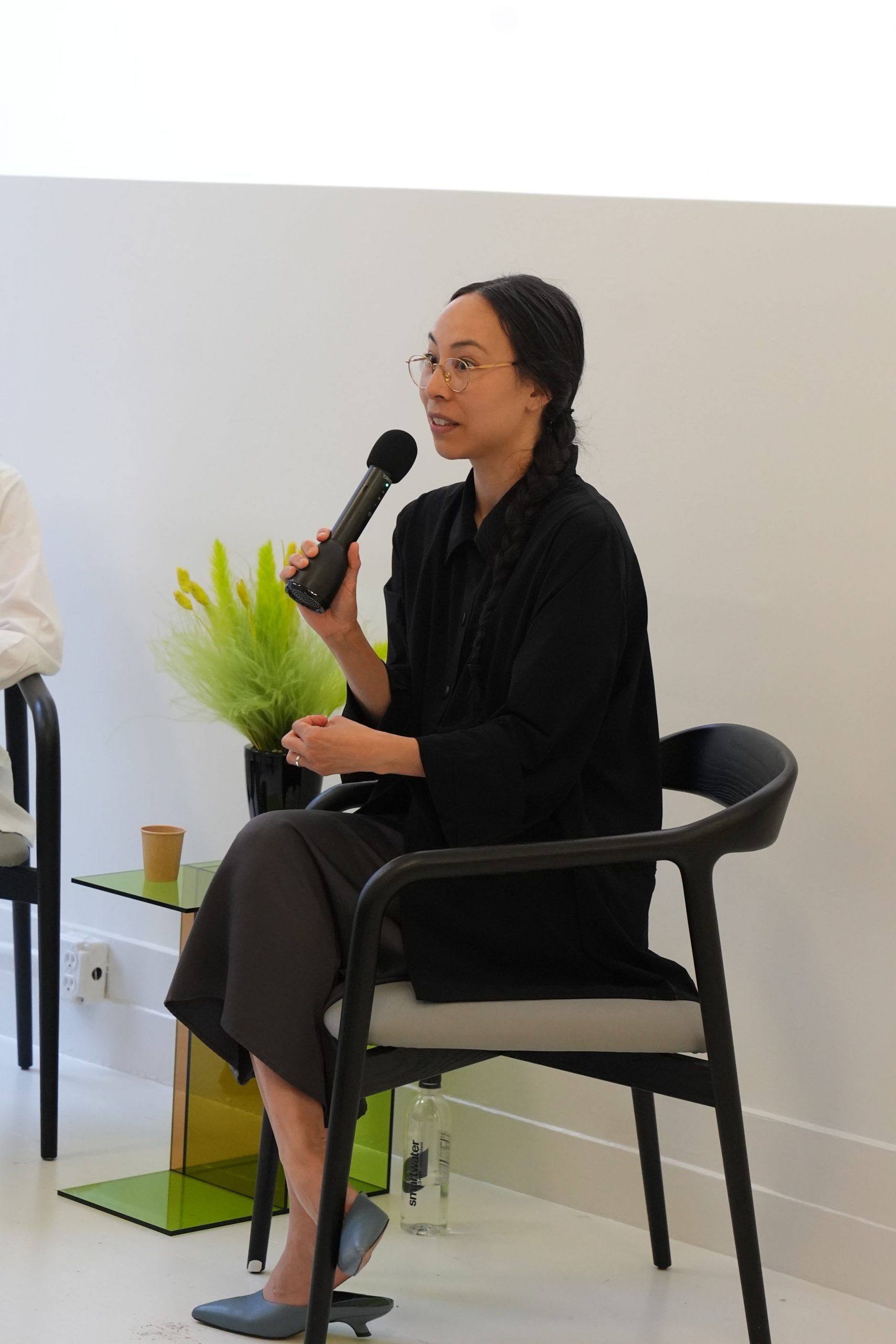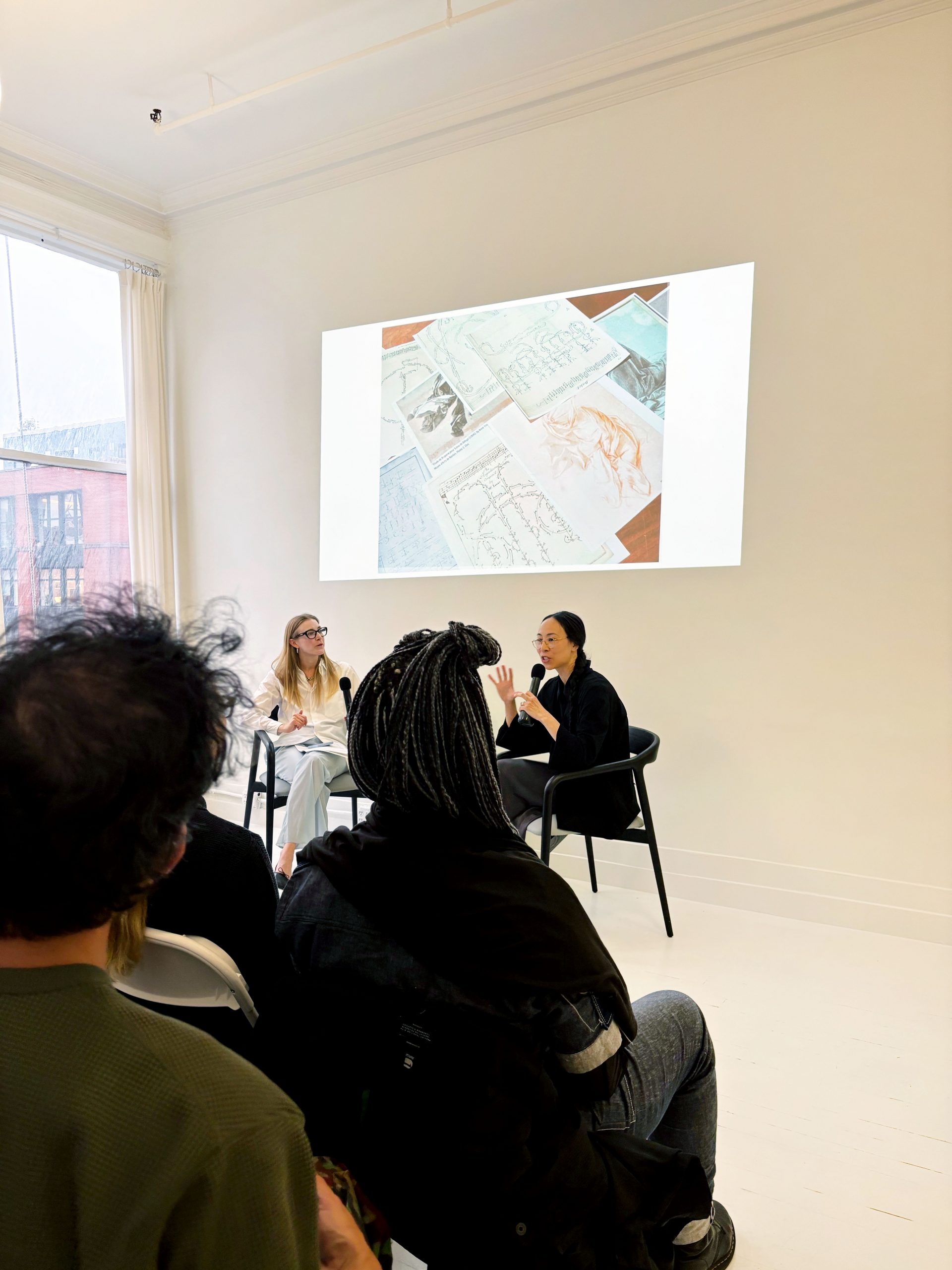Megumi Shauna Arai and Hannah Martin in Conversation at Topical Cream
On Tuesday, May 6, 2025, Topical Cream hosted an intimate conversation at our SoHo headquarters between artist Megumi Shauna Arai and writer/editor Hannah Martin. Part of our ongoing public programming, the event offered a more in-depth look at the themes explored in Topical Cream’s recent article, No Beginning and No End: Megumi Shauna Arai in Conversation with Hannah Martin.

This discussion ranged from historical to conceptual topics—from Baroque systems of movement notation like Beauchamp-Feuillet to the writings of Aby Warburg, a philosopher known for tracing recurring motifs across centuries of visual culture. These convergences mirror the layered approach in Arai’s textile-based practice, where gesture, grief, and resistance are folded—literally and metaphorically—into cloth.

Arai spoke about the role of fabric as a living material, capable of registering both personal and collective memory. Her current work, composed of resist-dyed silk panels, patchwork, and video collaborations with dancer Ayano Elson, emerges from a fascination with what she describes as “the emotive geometry of the fold.” These folds, she explained, are not just formal—they are philosophical, intimate, and political.
Martin, who is the author of Nicola L.: Life and Art, and whose writing focuses on art and design, led the conversation by drawing connections between Arai’s material and broader questions of diaspora, abstraction, and belief. The panel closed by invited attendance to consider how movement—through fabric, through bodies, through time—can serve as a form of transcription, preservation, and renewal.

The panel closed by inviting those in attendance to consider how movement—through fabric, through bodies, and through time-based media—can serve as a form of transcription, preservation, and renewal.
Special Thanks to Abby Bangers from Object and Thing.